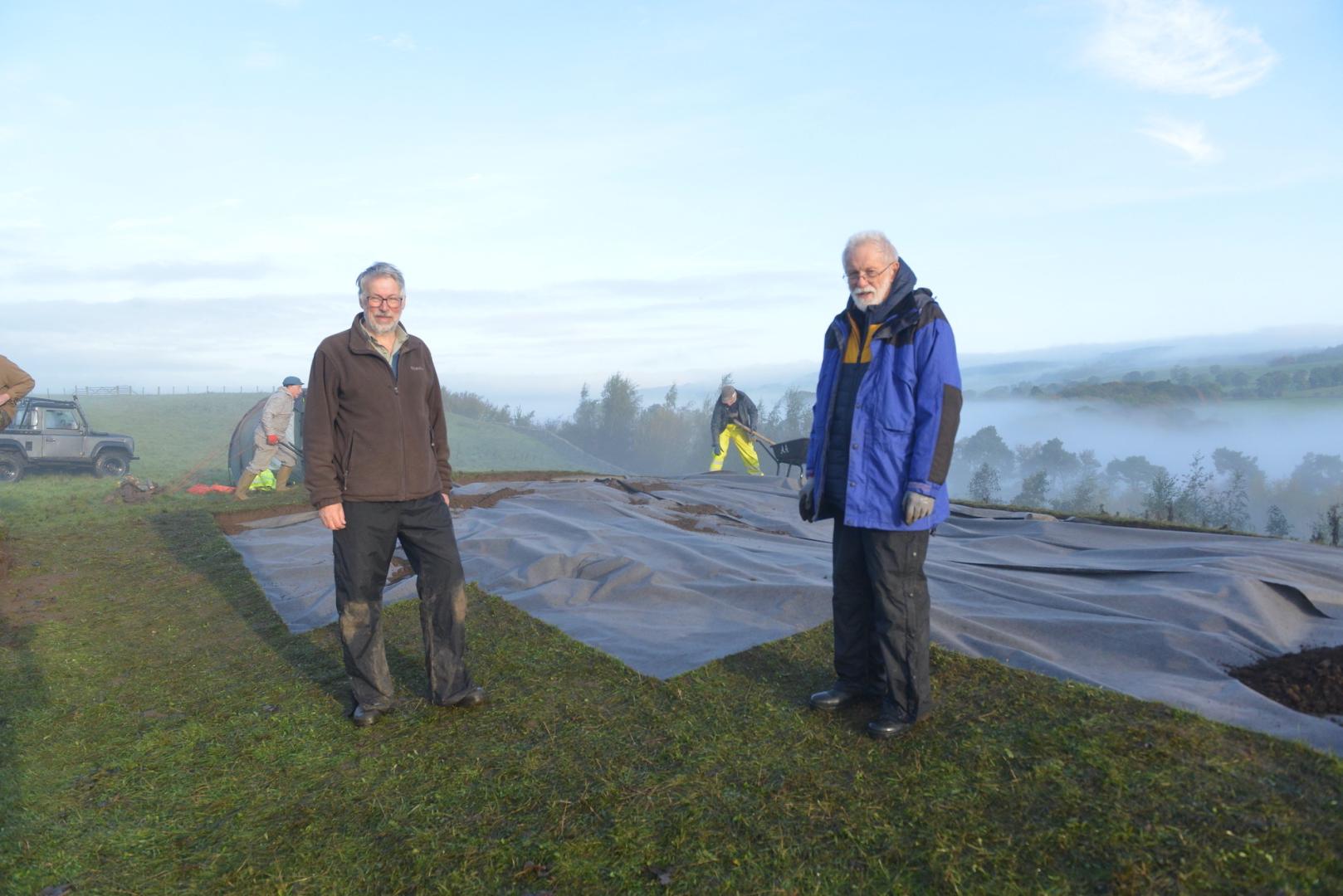A historic site near Cotherstone continues to give up its secrets. Martin Paul joined experts from Altogether Archaeology to find out more…
AN exploratory archaeological dig near Cotherstone has unearthed a rare copper-alloy pilgrimage badge and what could be a medieval windmill.
Altogether Archaeology (AA) has been excavating the site at Gueswick Hill, opposite Doe Park Caravan Site, for the past four years revealing evidence that it was occupied from the Iron Age through to medieval times.
The group chose to carry out a short exploratory dig at the end of last month on a part of the hill that was curious because a quern stone had been found there.
But a magnetometry survey of the area showed only a “jumble” with no discernible features.
Field lead Dr Martin Green said: “We didn’t know if there was anything here, it is just because it is an interesting place and because we found the millstone next to it – it’s very difficult to explain why a millstone should end up on the top of a hill.”
Across three days the group removed the turf and lifted a small amount of earth before they started making discoveries.
AA chairman Tony Metcalfe said: “Jan Hicks found a badge, which is a copper alloy pilgrim badge, depicting the martyrdom of St Edmund in the 9th century.
“The find liaison officer at Durham says nationally only about ten copper alloy ones have been found and all the academics say, as far as they know, none have been found this far north.”
St Edmund was king of East Anglia in the 800s and was killed in battle, possibly by Danish archers.
Mr Metcalfe added: “[The badge shows] Edmund standing in the centre, and possibly tied to a tree, with archers to either side with bows drawn.”
Also interesting is the layout of the structure that the group found in the shallow area that they dug up.
Dr Green said: “It does look as though we have a possible windmill. It was probably medieval, that is when they were first introduced to England, before that it was only water mills.
“There is a big flat stone with a group of smaller stones around it, that could possibly be the central pivot at the base of the windmill. It would only have been a small windmill, not like the big Victorian ones.
“It needs investigating further but the weather is against us. We thought we’ve proved something is here so we’d better just stop.”
The group applied a covering to the dig site on the last day of the excavation to prevent contamination, before returning the earth and turf.
They plan to return in August next year for a more thorough examination, as well as to continue a trench on another part of the hill that they had not completed during their excavation in August this year.
A report has yet to be completed about the summer’s activities but Dr Green revealed initial tests on samples had shown previously unknown facts about the site.
He said: “We found a lot of charcoal from hedgerows, with evidence from the growth rings that hedgerows were being trimmed and coppiced. So, it was obviously a landscape with hedgerows between the fields and they were using coppiced fuel.”
The results also showed that spelt wheat was farmed extensively in the area.
Dr Green concluded: “We always tend to think a site is simple and we will dig one quick trench and find out everything about it, but things are always more complicated than you think they are going to be and the more you look the more you find.
“This is classic landscape archaeology – it has had 3,500 years of use. There have been people here doing stuff in different ways. Although it just looks like a green field now, it is a green field with a very complicated story.”






